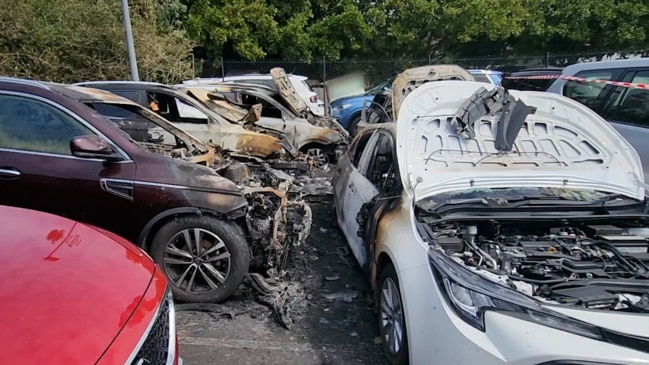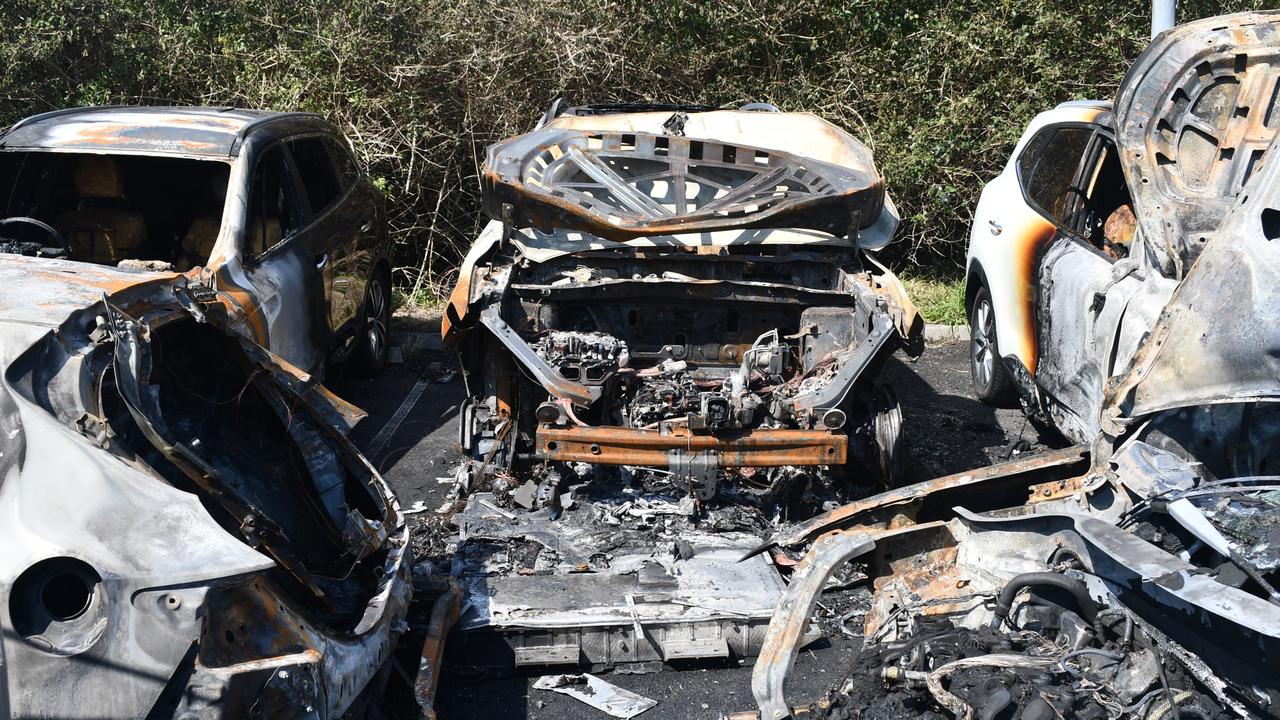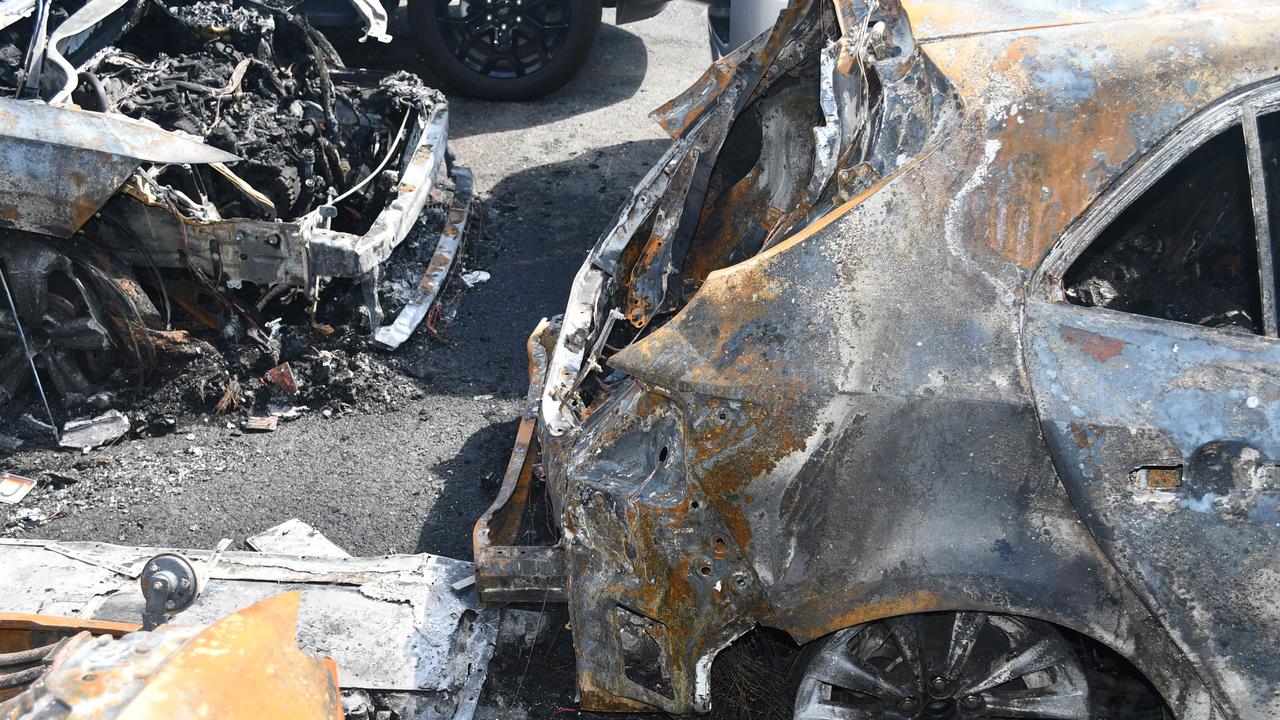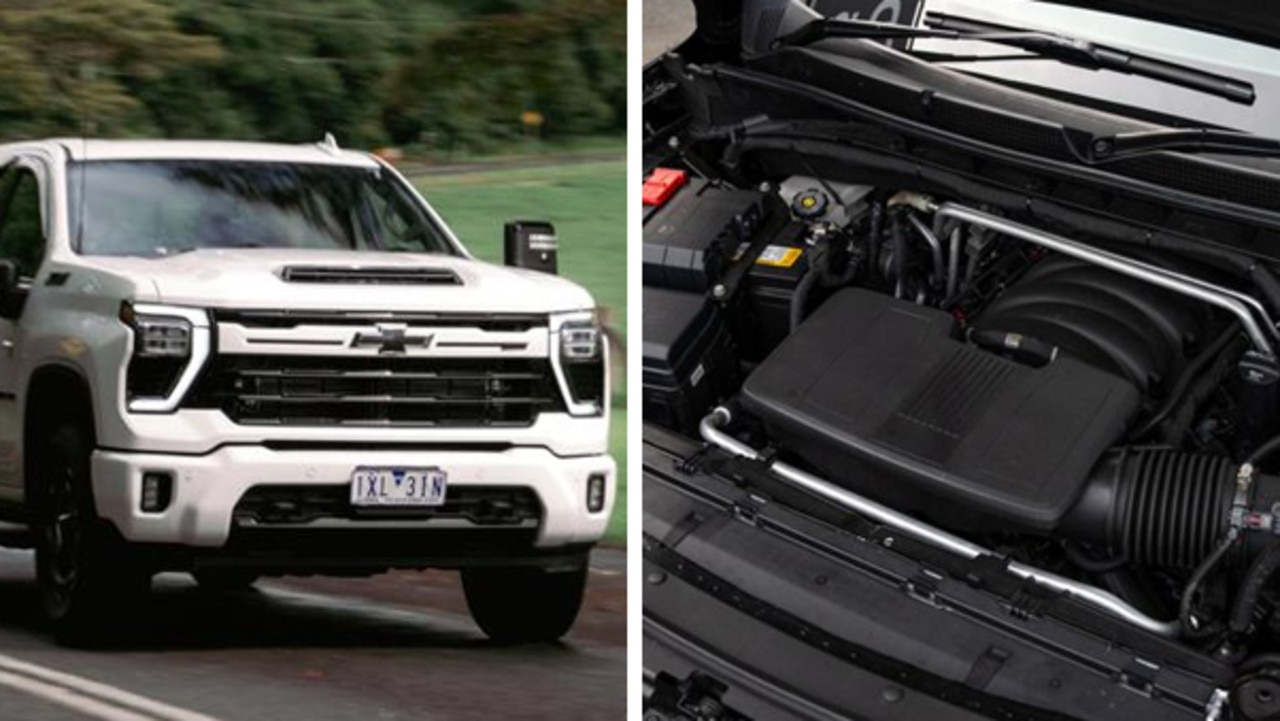Battery fire destroys five cars at Sydney Airport
A faulty lithium ion battery has been blamed for a fire near Sydney Airport that has destroyed a number of cars in a holding yard.

A battery fire destroyed five cars near Sydney Airport last night.
Fire and Rescue NSW (FRNSW) confirmed the fire was caused by a damaged lithium-ion battery that had been removed from an electric vehicle.
The vehicle in question appears to be a circa-2020 MG ZS EV.
The incident happened at about 8:30pm last night at a parking lot on Airport Drive, Mascot, near the airport perimeter.
FRNSW said fire had engulfed the electric car and spread to four other vehicles when they arrived.
It is believed the battery was being stored at the lot next to the car it belonged to.
The airport’s Aviation Rescue Firefighting Service helped to extinguish the fire.
Experts from FRNSW are continuing to examining the scene and piece together the exact circumstances of the fire.
An MG Motor Australia spokesperson said:“MG understands the customer’s vehicle and battery were already damaged and the battery was not in the vehicle. We understand the vehicle was being stored at an airport holding yard and also not in a driveable condition.”

Research suggests that electric cars are less prone to fires than internal combustion vehicles but much harder to put out once they catch alight.
Data from the National Transportation Safety Board, AutoinsuranceEZ found that 25 out of every 100,000 EVs sold caught fire, compared with 3474 fires out of 100,000 for hybrids and 1529 for petrol and diesel cars.
Austin Fire Department in the United States estimated that an EV could take up to 150,000 litres of water to put out, compared with between 1900 and 3800 litres for a petrol car.
But a FRNSW spokesman said the fire had been contained fairly easily.
“They managed to get on top of it fairly quickly,” he said.

He said crew watched the battery for several hours to make sure it didn’t reignite and then revisited the scene in the morning to ensure it was still stable.
EV fires can reignite days after the initial incident and lead to “thermal runaway”, which is described as an uncontrollable increase in temperature.
Electric car battery fires can be a greater risk than internal combustion engines because of the chemicals used in the battery. And there can often be a delay in ignition of the fire, as heat continues to build after the car is switched off, meaning the car can often be unattended when it catches fire.
Several car makers have had to issue recalls for battery fire issues in the past.




